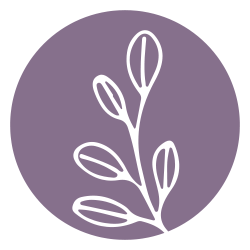Five reasons to activate your relaxation response
By Dr. Andrea Hilborn, ND
Originally published in the Kingston Whig-Standard.
There are a million things on your to-do list, traffic is terrible, you forgot something you need at home, and you’re worried about an upcoming event. For most of us, there are plenty of things during the day that activate the stress response. We know it’s bad to be inundated and overwhelmed by stress, but did you know there is an opposite reaction?
Whereas the stress response increases your heart rate, increases your rate of breathing, increases muscle tension and decreases slow brain waves, the relaxation response decreases your blood pressure, decreases your heart rate, decreases your rate of breathing, decreases your muscle tension and increases slow brain waves. Sounds great right?
It feels good, too, and has many health benefits, including:
1. Lower blood pressure — Deep breathing on a regular basis can lower blood pressure by at least five points. This is probably the simplest, safest method of reducing blood pressure.
2. Better moods — Purposefully relaxing can decrease anxiety and boost the mood. You will also find that after a session, your mind is clear, which makes all the things on your to-do list easier to get done.
3. Reduced chronic pain — A daily dose of the relaxation response for patients with chronic pain decreased the severity of their pain, improved their moods and increased their activity levels.
4. Easier sleep — Regularly practicing the relaxation response had astonishing results in one study — 75% of the insomniac participants became normal sleepers. The other 25% also had improvement. Imagine how powerful it could be if we taught our children to do some deep breathing before trying to fall asleep at night.
5. Fewer migraine headaches — Consistent relaxation can decrease the frequency and severity of migraine headaches. Many sufferers are willing to do whatever it takes to find relief. Again, this is a simple, safe treatment.
I believe that the variety of benefits the relaxation response has demonstrates that we should all be doing it. It is one aspect of a healthy lifestyle, another habit we need to form.
Every person has the innate ability to relax. Most of us just don’t usually practice relaxing on command. The most basic form of purposefully relaxing is to find a comfortable position and breathe deeply for 10 to 20 minutes. A few minutes in, you will feel a shift toward feeling calm.
Some people can’t just sit there, breathe deeply, and reach relaxation — at first. For some, it will take some practice, or perhaps a different technique. I have mentioned progressive muscle relaxation before, which is a variation on deep breathing that helps to eliminate mental distractions. There is a handout that describes it on my website at www.natural-route.com/resources. Don’t be discouraged if you can’t elicit the relaxation response right away.
You may recognize the relaxation response from activities that you do. Some people find that repetitive activities like knitting, or creative activities like painting, will put them in the relaxation zone. For some, praying or chanting is the key.
I frequently use the relaxation response as part of the treatment plans I recommend for mood stuff, sleep problems and high blood pressure. If someone is skeptical about the whole idea, I ask them to do a series of acupuncture treatments. Even for people who are afraid of the needles, acupuncture can be tremendously calming. Massage can have the same effect.
Eliciting the relaxation response can be as fancy or as simple as works for you. Try it today.
Andrea Hilborn
